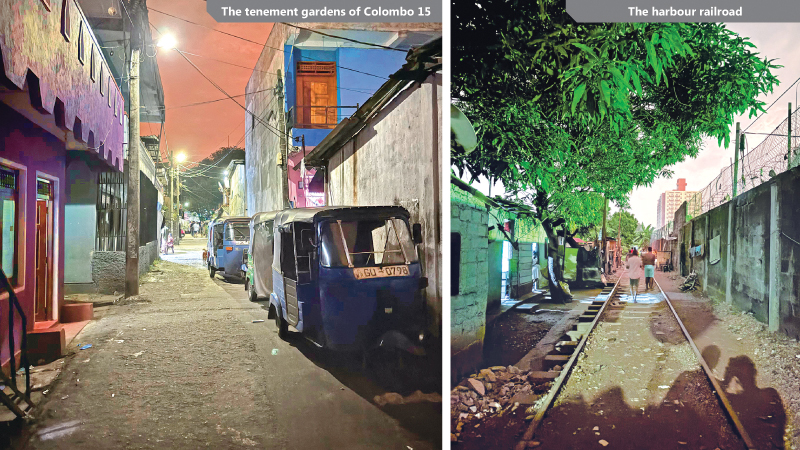 The townhouses smelled of fresh conifers as heavy container trucks rumbled up and down on Lower St. Andrew’s Road. Groups of dock workers trickled out of the De Seram Gate in their blue overalls and yellow helmets as women and children hurried to church for the Novena. The sun had set, but its seemed like the day had just begun for Colombo 15 which together with its neighbouring boroughs makes up the city’s busy port district. While the press had reneged from the people in recent years, we made it our duty to document ground realities. True to the name of our publication, these were our observations of a night out at the Dockland junction.
The townhouses smelled of fresh conifers as heavy container trucks rumbled up and down on Lower St. Andrew’s Road. Groups of dock workers trickled out of the De Seram Gate in their blue overalls and yellow helmets as women and children hurried to church for the Novena. The sun had set, but its seemed like the day had just begun for Colombo 15 which together with its neighbouring boroughs makes up the city’s busy port district. While the press had reneged from the people in recent years, we made it our duty to document ground realities. True to the name of our publication, these were our observations of a night out at the Dockland junction.
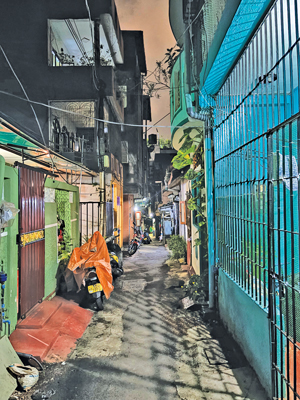
‘Gated’ community
My guide, Gihan Bulathsinhalage grew up in the tough streets of Mutwal and provided the commentaries. The Port access highway casts shadows on the tenement gardens below and we descended to the ‘underworld’ where we encountered the now-defunct harbour railway tracks.
“We haven’t seen a train going by here for the past ten years,” said a man who was clearing the overgrowth.
The homes in the tenement gardens were shoddy with TV dishes adorning some roofs; clothes lines crisscrossed over the tracks. The late evening pow wows filled the atmosphere; I heard passersby speaking in Tamil and Sinhala. The paths between the tenement gardens were narrow but passable with some leading to shared courtyards with Catholic, Buddhist and Hindu shrines.
What is interesting to note is how the residents have, over the years learned to use the limited space. A three-storeyed home which my guide described as ‘community housing’ was meticulously built to preserve a coconut tree. Also a narrow passage between several houses is basically a tunnel. “Architecture in these parts comes out of necessity. It’s less about aesthetics and more about functionality when you build here,” Gihan said.
Limited space
Some of the community houses were made of a mixture of styles and reflect the difference between generations. Gihan said that given the limited land, residents have maximised the vertical space available and gone up.
The maze meandered through creeks discharging soapy water adjacent to empty lots swarming with fireflies. The narrow lanes became wider as we started up the incline.
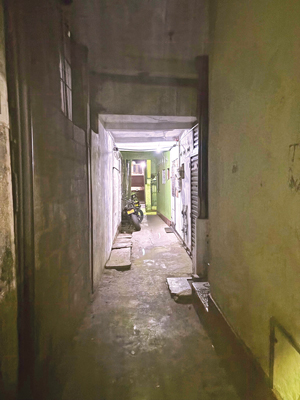
The tunnel
One could mistake Ellie House Road to be a quiet Nugegoda suburb; far removed from the hustle and bustle of the Dockland Junction. My guide said that it was the Ports Authority quarters in the neighbourhood. Behind the stucco walls, electric gates and watchful CCTVs one couldn’t mistake the affluence in stark contrast to the homes downhill. The socio-economic level here can be described as middle and upper-middle class.
The names Dockland, Mutwal, Modera and Mattakuliya are used interchangeably and the history of this part of the city goes back centuries. The Colombo dry docks were first built during the reign of Queen Victoria and were further refurbished in the 1940s with the installation of the Mutwal Fishery Harbour. The original fishery village from the Portuguese period still remains adjacent to the Walkers Colombo Shipyard and overseen by the famous De La Salle College. It’s these Mutwal fishermen who later became the generations of dock workers at the Colombo Port.
Retired teacher
Northern Colombo in its essence was the melting pot of the Portuguese and Dutch sailors who intermingled with the motley crew of Sinhala, Tamil and Moor traders and fishermen; creating this distinct melting-pot.
Jayantha Ferdinando is a retired Government school teacher who now runs a small electronics workshop. At 8.00 pm Ferdinando was busy at work fixing a table fan. We asked him how he finds living in the Docklands.
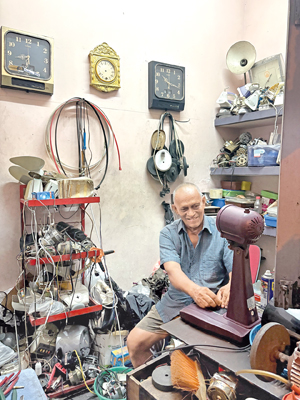
Retired teacher Jayantha Ferdinando
“Because my pension is meagre and I need my medication, I make extra money using my skills. I’m never idle. Since my youth I have honed various talents with much difficulty, much investment and injury. We are now enjoying all my hard work. So, we don’t live with worry save for the ailments of our aged bodies for which we take medication. Anyhow, we eat and drink and live our lives happily taking one day at a time”, he said.
Stringhopper women
We concluded our tour stopping by a famous local family business. Wall’s Lane is just adjacent to the oil storage compound on Bloemendhal Road.
In a simple and untitled driveway several women hovered around a deep basin making stringhoppers. I later learned that this was a women-headed business run by over three generations of the same family.
As we watched the women make, take and pack their orders, there was a moment of epiphany. These people are the reason this society keeps running. Years of toil have given a salient dignity to the Sri Lankan masses. Their legacy is not their abodes, but their deeds. The concrete around them will turn to dust in a few centuries but the economic wheels that turn in these parts keep the wheels of the rest of the country turning.
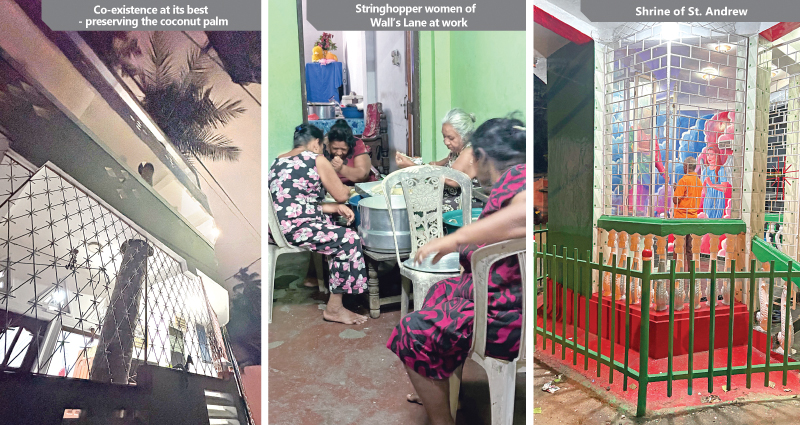
Pix by Gihan Bulathsinhalage







